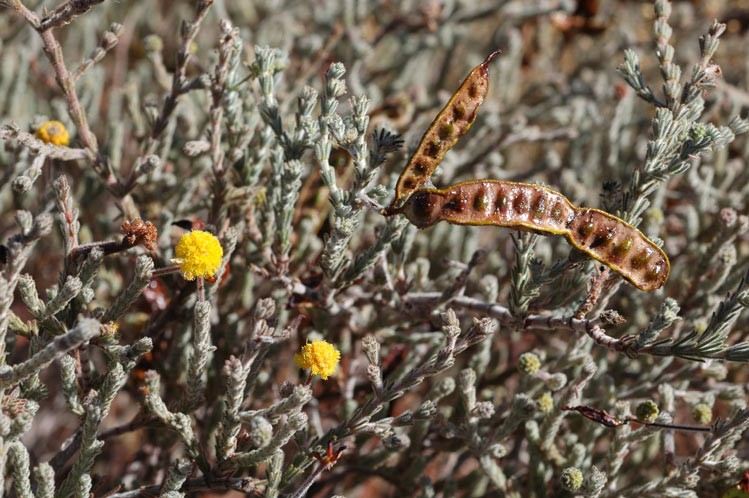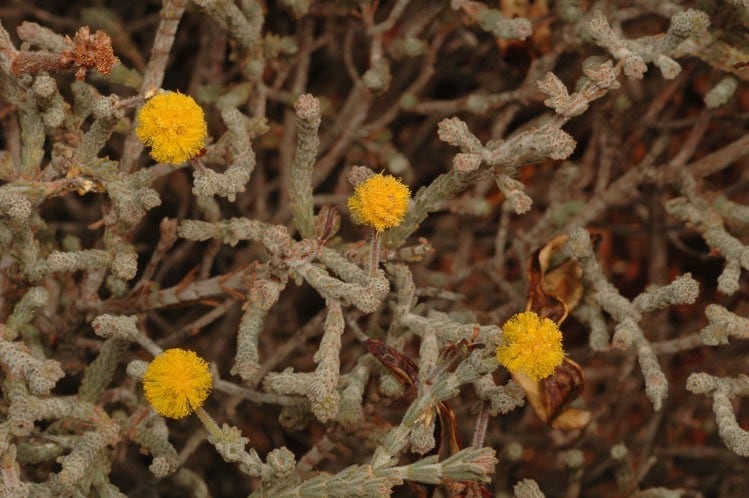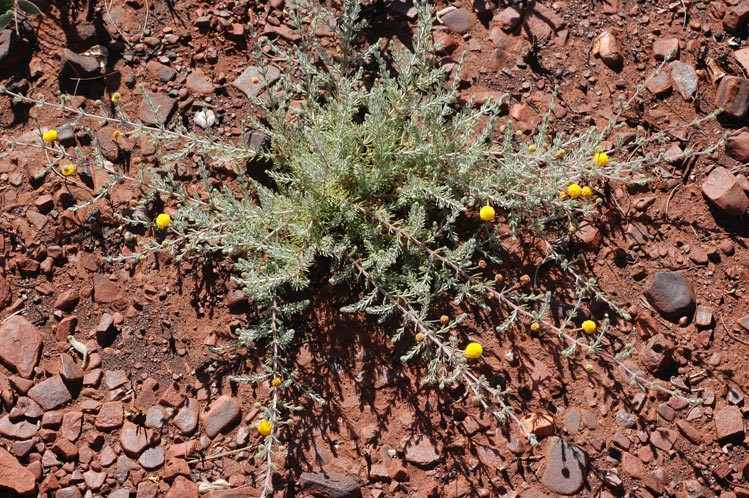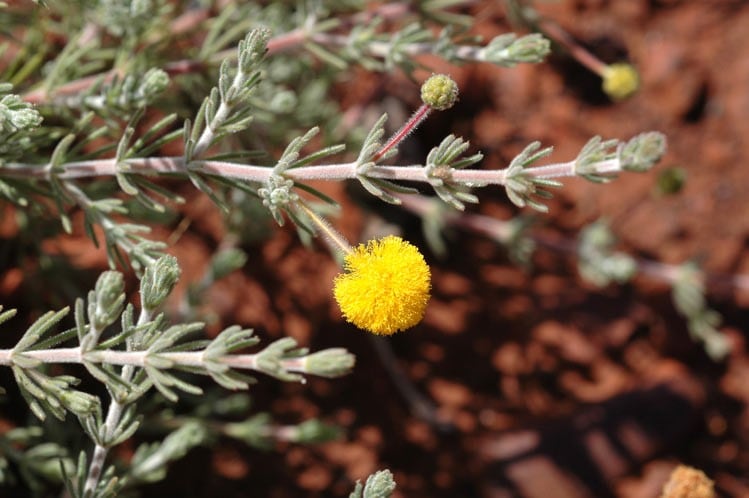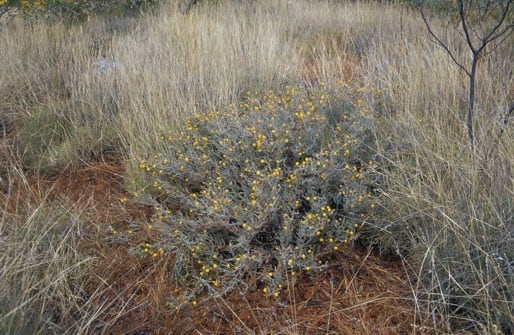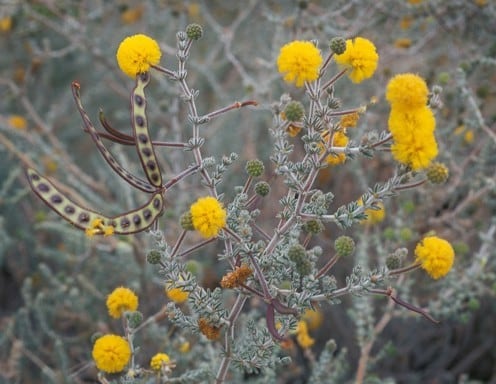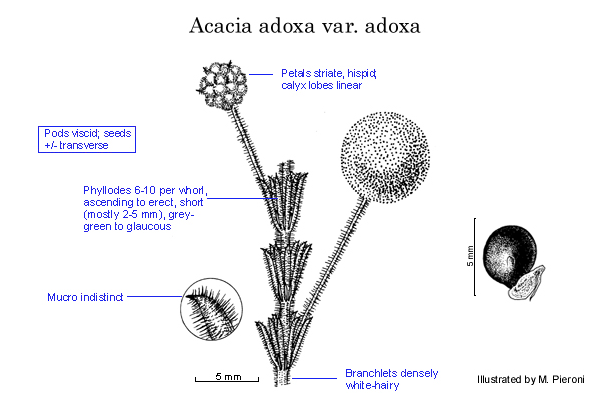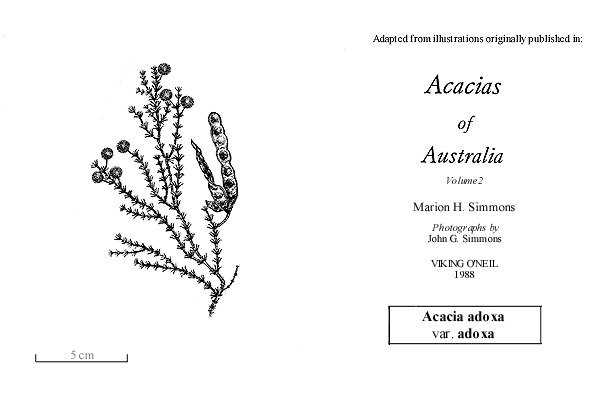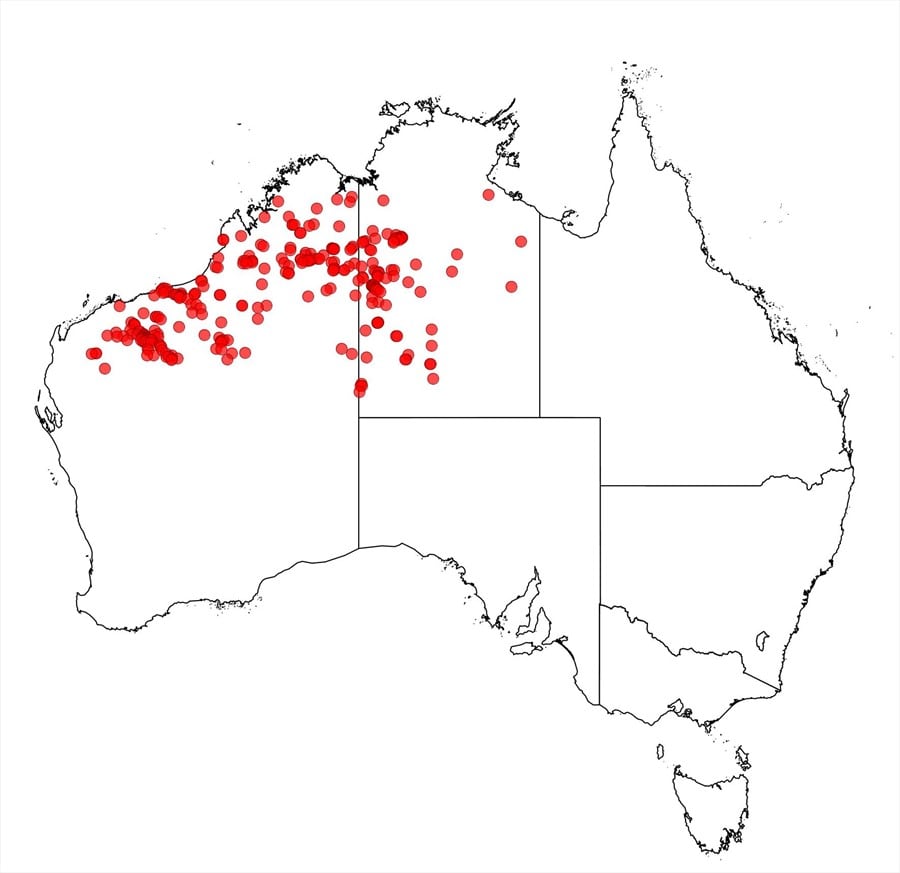Acacia adoxa Pedley var. adoxa
WATTLE
Acacias of Australia
Family
Fabaceae
Distribution
Widespread especially from the Barlee Ra. through the Pilbara to the southern Kimberley, W.A., with scattered occurrences in the Great Sandy Desert and an isolated record near Wyndham; also in arid western N.T.
Description
Compact shrub, crowns smoky grey or blue to grey-green or blue-green. Branchlets densely velvety-tomentose with white patent or slightly retrorse hairs. Phyllodes usually 6–10 per whorl and (1.5–) 2–5 (–7) mm long, pubescent with slightly curved hairs. Peduncles (3–) 6–18 mm long, indumentum similar to branchlets. Bracteoles setose in upper half. Calyx lobes and corolla lobes hispid with hairs 0.2–0.4 mm long. Pods 6–10 mm wide.
Phenology
Flowers mostly Apr.–Sept.
Habitat
Grows in sand (commonly lateritic) and in shallow rocky soil.
Specimens
W.A.: 69 km W of Margaret River between Halls Creek and Fitzroy Crossing, A.C.Beauglehole 11139 (PERTH); base of Mt House, W.V.Fitzgerald 972 (NSW, PERTH); South Barlee Ra, Sept. 1959, A.Robinson (PERTH). N.T.: 59 km NE of Tanami, G.M.Chippendale NT5647 (BRI, CANB, DNA, MEL, PERTH); Vaughan Springs, R.E.Winkworth 413 (CANB, MEL).
Notes
Occasionally hybridises with A. spondylophylla in the Pilbara region, W.A. (see A. adoxa × spondylophylla).
The variety has been generally confused with A. lycopodiifolia which it resembles in indumentum and habit. The arrangement of the seeds in the pod, the lack of setae on the phyllodes, and the fewer phyllodes per whorl distinguish the two taxa. A specimen labelled Port Darwin, [N.T.], A.Forrest (MEL) apparently has an incorrect locality. A collection from Abydos–Woodstock Reserve in the Pilbara, W.A., K.L.Tinley 3274 (PERTH), has unusually short hairs on its branchlets and phyllodes, and atypically short peduncles (3–4 mm long). Another Pilbara plant (R.J.Chinnock 9705, PERTH, from the mid-slope of Mt Meharry) is unusual in having up to 15 phyllodes per whorl which are longer than normal (10–12 mm).
This very attractive variety has horticultural potential as a ground cover, especially for rockery plantings. In some places it regenerates prolifically from seed following fire.
FOA Reference
Data derived from Flora of Australia Volumes 11A (2001), 11B (2001) and 12 (1998), products of ABRS, ©Commonwealth of Australia
Author
A.S.George
Edited by B.R.Maslin
This identification key and fact sheets are available as a mobile application:
URL: https://apps.lucidcentral.org/wattle/
© Copyright 2018. All rights reserved.

